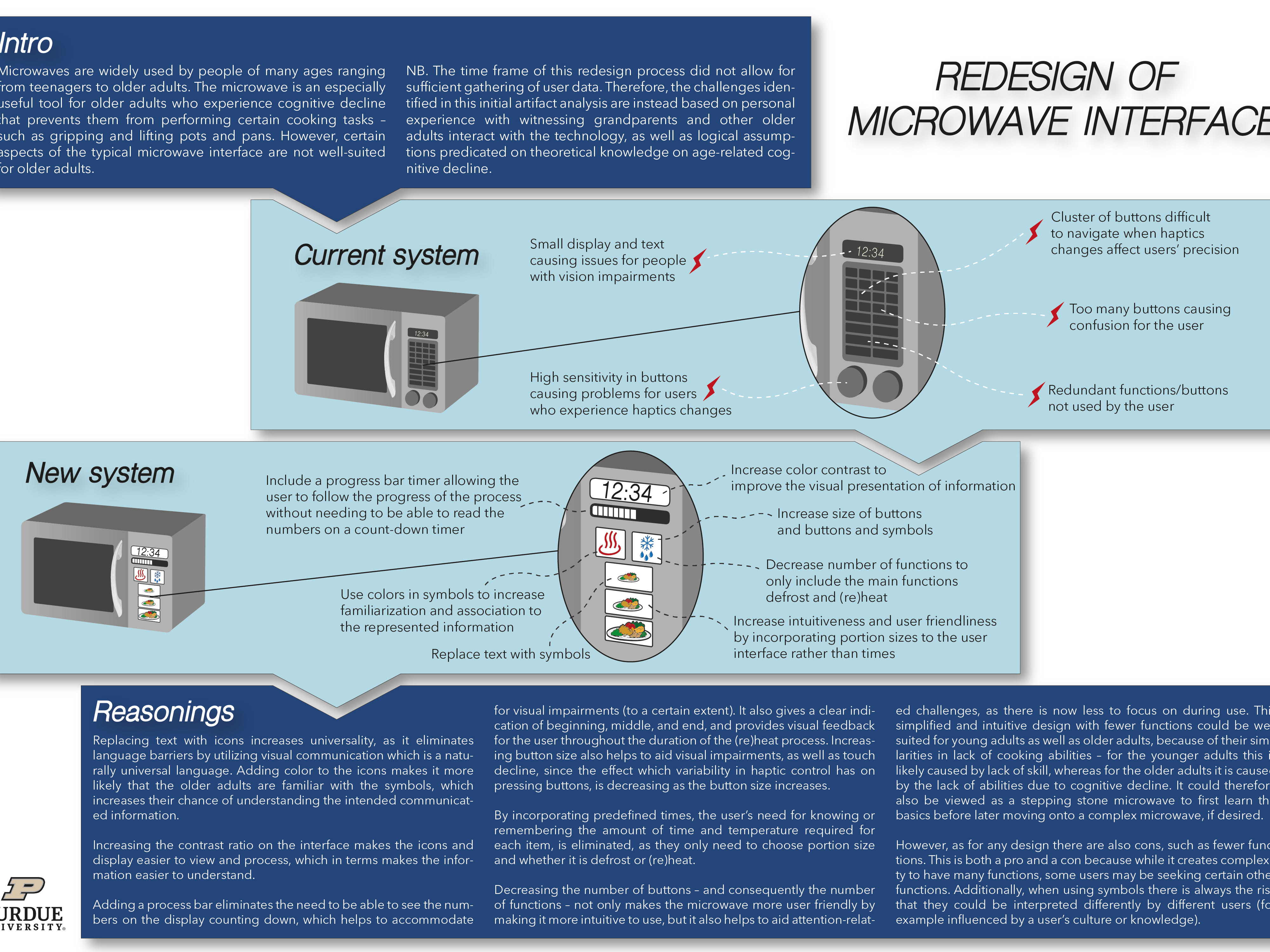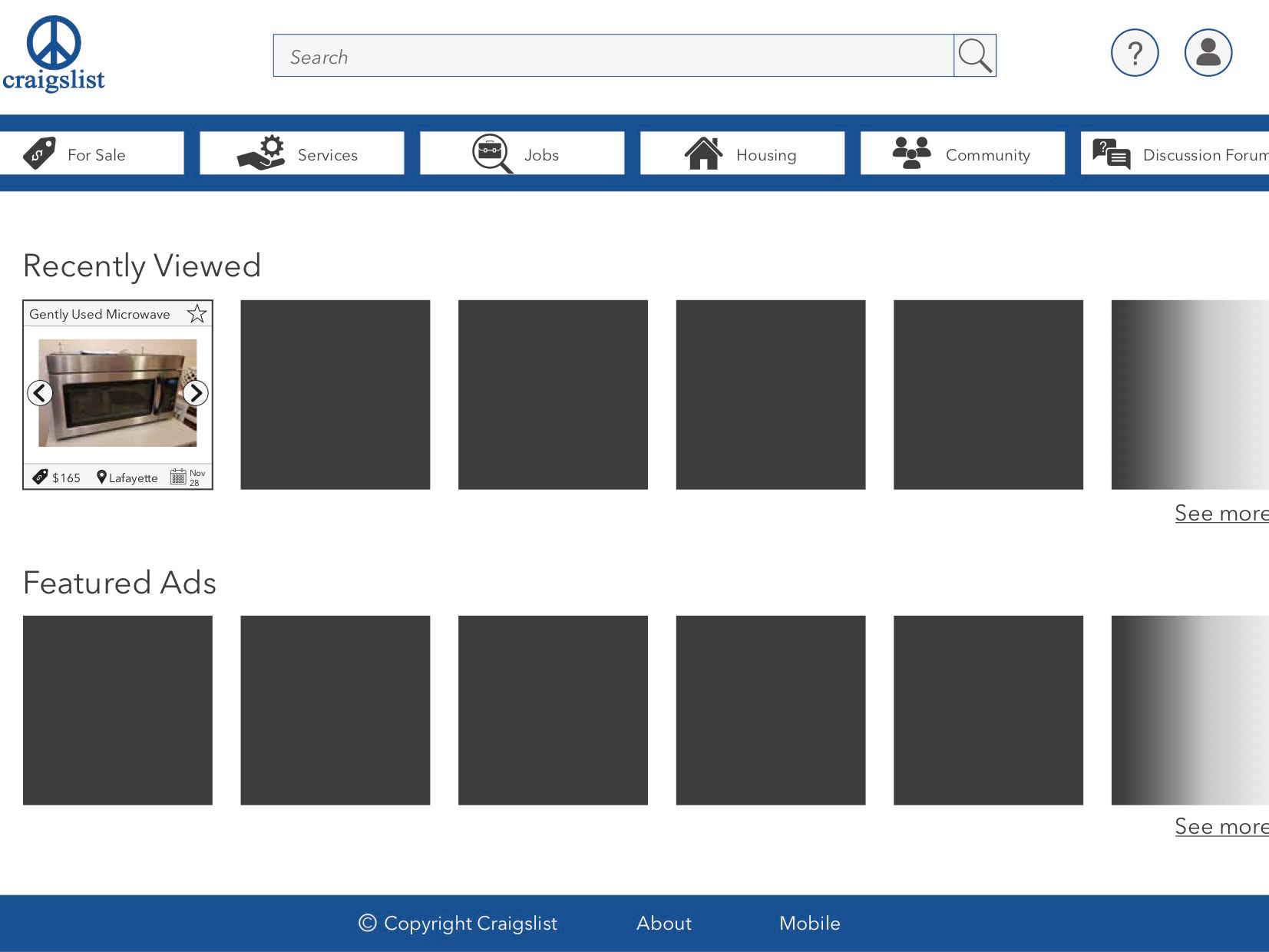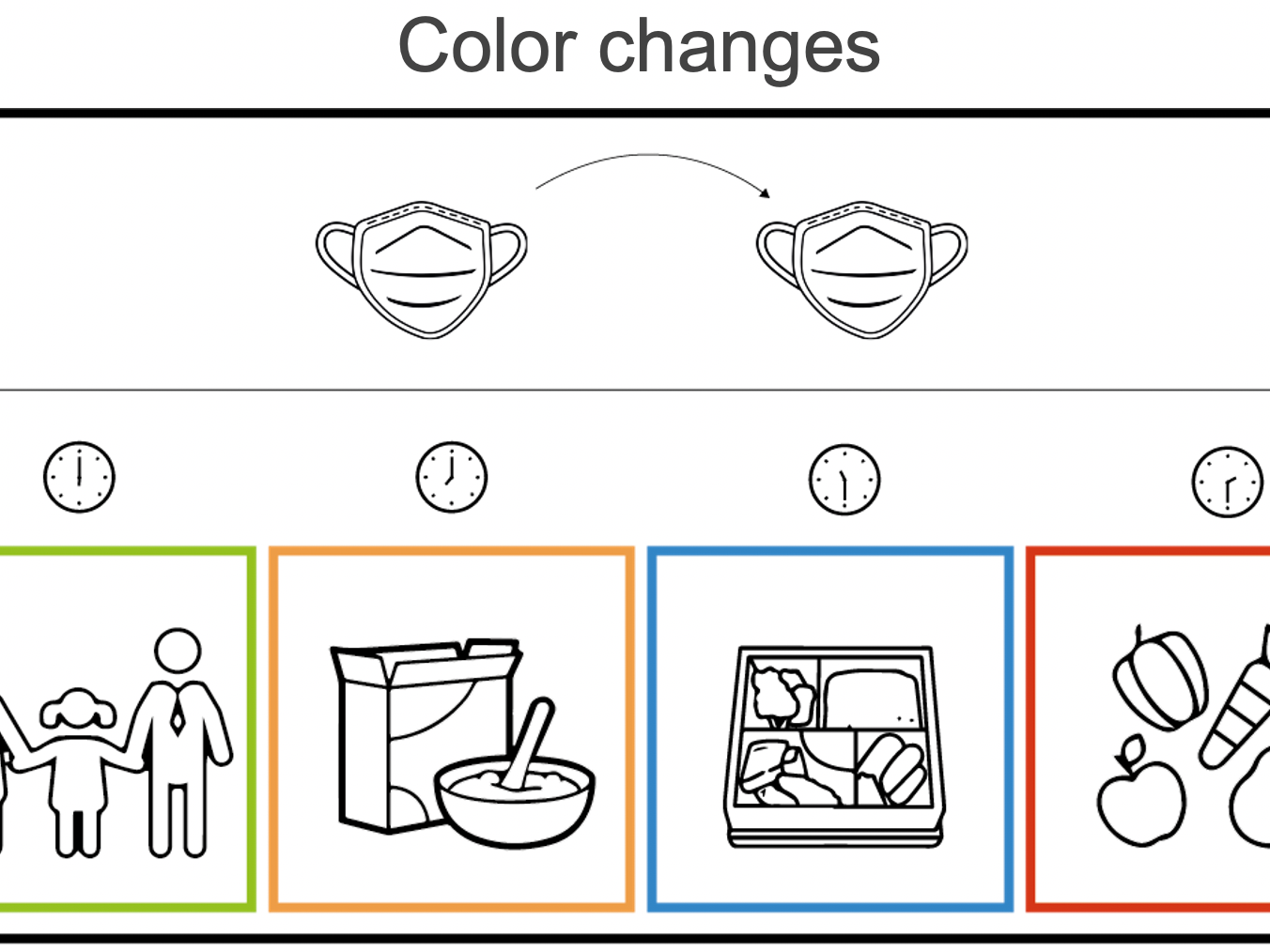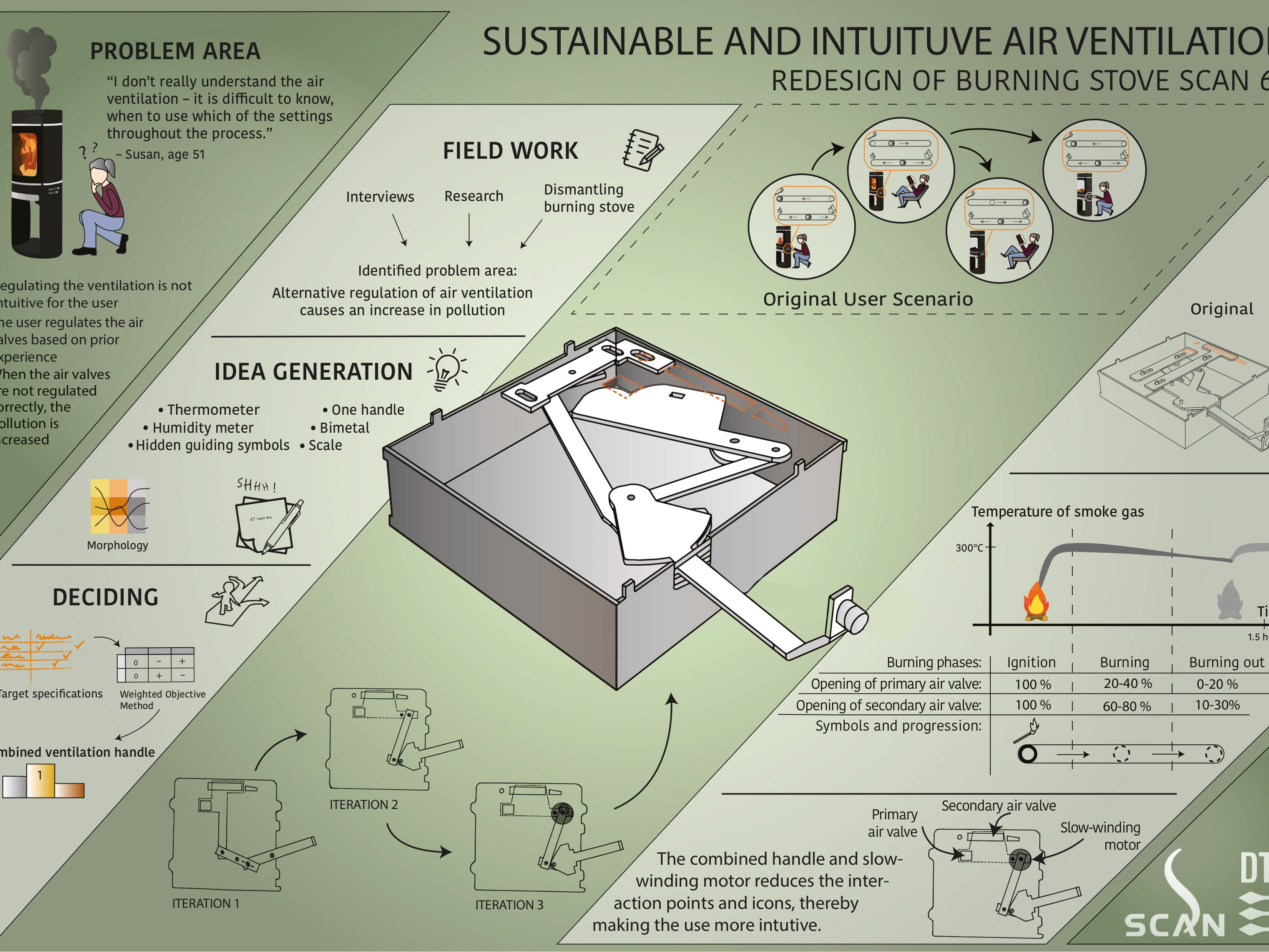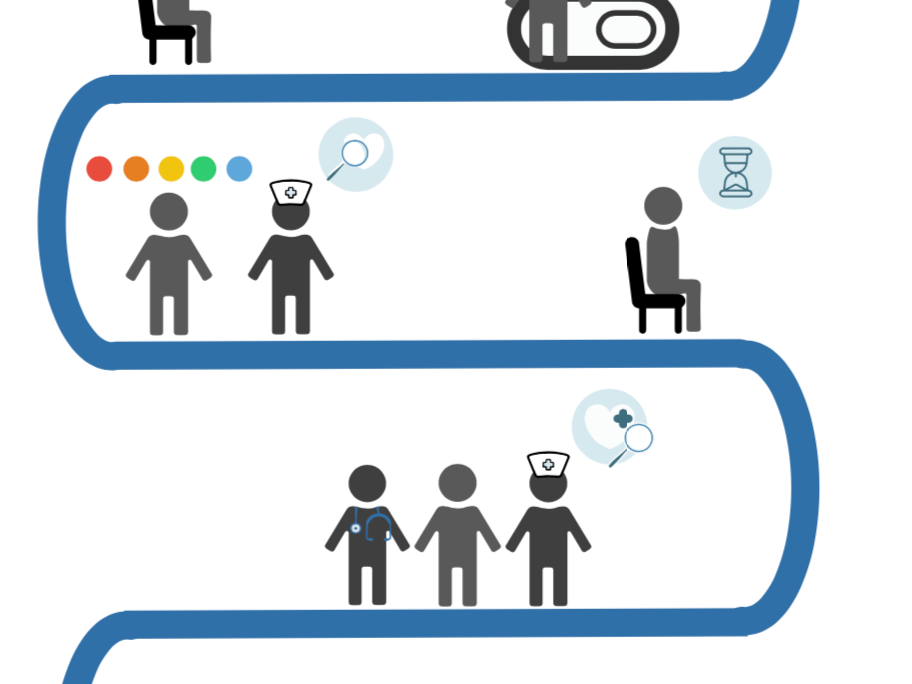Intro
Due to elderly citizens' increased risk of infections, there is a demand for high compliance with hygienic measures within the context of nursing homes in order to prevent infection spread. However, it remains challenging for nursing home employees to comply with hygienic regulations and recommendations. This indicates a need for behavior change in order to create and support infection preventive behaviors within the context of nursing homes. However, there is limited research on, and interventions developed for, changing behaviors in this context.
Background and Relevance
The complexity in nursing homes, especially related to its dual purpose of being both a workplace and a home, makes it a challenging context for behavioral change. Behavior change methods typically do not tackle complex systems, and prior research often either proposes organisational policies (instructions, educations), or nudging individual behaviors as a means of behavior change. This indicates a neglect of the ambiguities and complexity within the nursing home context, in existing research. As such, the aim of this project is to identify how one can support and sustain the creation of infection preventive behavior in the complex systems of nursing homes, and how we can address ambiguity within the field of behavioral change.
Approach
Our research was conducted using a Research through Design (RtD) approach. The research included three RtD phases (or iterations): phase 1 – Social Implications Design (SID), phase 2 – Co-Creation, and phase 3 – Design Intervention. Phase 1 aimed to provide a future view of the world within which our research would be used, phase 2 aimed to involve nursing home employees in the creation of the intervention, and phase 3 aimed to evaluate the intervention. Based on these three phases, dimensions, themes and categories were identified through reflective practices on the design process. Three dimensions were identified: perceived ambiguity, professional identity, and perspectivism, each appertaining to a number of themes and categories.
Findings and Theoretical Contributions
By using the RtD approach, we are able to identify three essential dimensions when designing for behavior change within the context of nursing homes: 1) perceived ambiguity, 2) professional identity, and 3) perspectivism.
Considering the findings pertaining to each of the three dimensions, and to prior literature related to them, the thesis is able to make five main contributions to theory:
1) The aim should not be to reduce perceived ambiguity, as suggested in prior
literature, but rather to recognize and try to accommodate it.
literature, but rather to recognize and try to accommodate it.
2) We apply existing research on identity in a new context by suggesting that
professional identity influences the role assumed by an individual, thus
affecting their prioritisation of tasks.
professional identity influences the role assumed by an individual, thus
affecting their prioritisation of tasks.
3) We identify a direct link between perceived ambiguity and perspectivism, as
the perceived ambiguity leads to the interpretations based on individual
perspectives, and oppositely perspectivism can contribute to perceived
ambiguity due to the influence of varying interpretations.
the perceived ambiguity leads to the interpretations based on individual
perspectives, and oppositely perspectivism can contribute to perceived
ambiguity due to the influence of varying interpretations.
4) Based on our findings, we argue that perceived ambiguity can lead to an
increase in the significance of professional identity, as familiarity in tasks can
reduce dubiety. This familiarity is based in experience, which is a core element
of professional identity, thus establishing a link between perceive ambiguity
and professional identity.
increase in the significance of professional identity, as familiarity in tasks can
reduce dubiety. This familiarity is based in experience, which is a core element
of professional identity, thus establishing a link between perceive ambiguity
and professional identity.
5) We identify a link between perspectivism and professional identity, by indicating
that an employee’s professional identity affects their interpretations, which are
influenced by their individual perspectives. On the other hand, perspectivism
plays a role in defining professional identity, as it affects the internal
contributors of this.
that an employee’s professional identity affects their interpretations, which are
influenced by their individual perspectives. On the other hand, perspectivism
plays a role in defining professional identity, as it affects the internal
contributors of this.

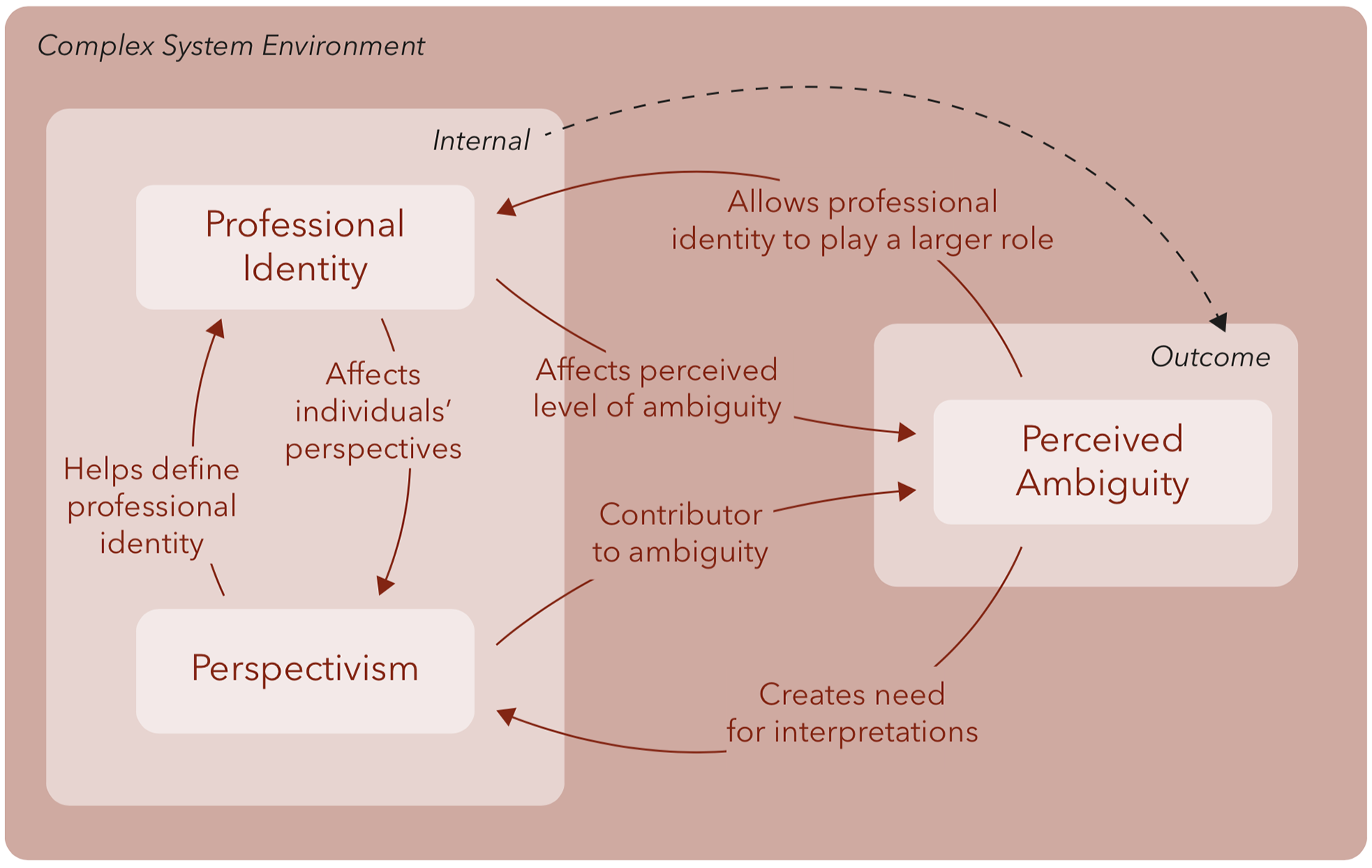
Conclusion
All in all, in order to design for ambiguity in regards to infection prevention in the context of nursing homes, our research indicates that the designer should be attentive to perceived ambiguity, professional identity, and perspectivism in the system. In accordance with this, we suggest a focus on recognising the ambiguity in the system and facilitating the communication of information between the societal and individual level. In order to do this, our research points to the need for establishing a collective professional identity among care personnel in nursing homes, as well as a collective professional identity across nursing homes on the intermediate level. By aligning the interpretations made by the nursing homes, it helps to bridge the current gap between the societal and individual level.

